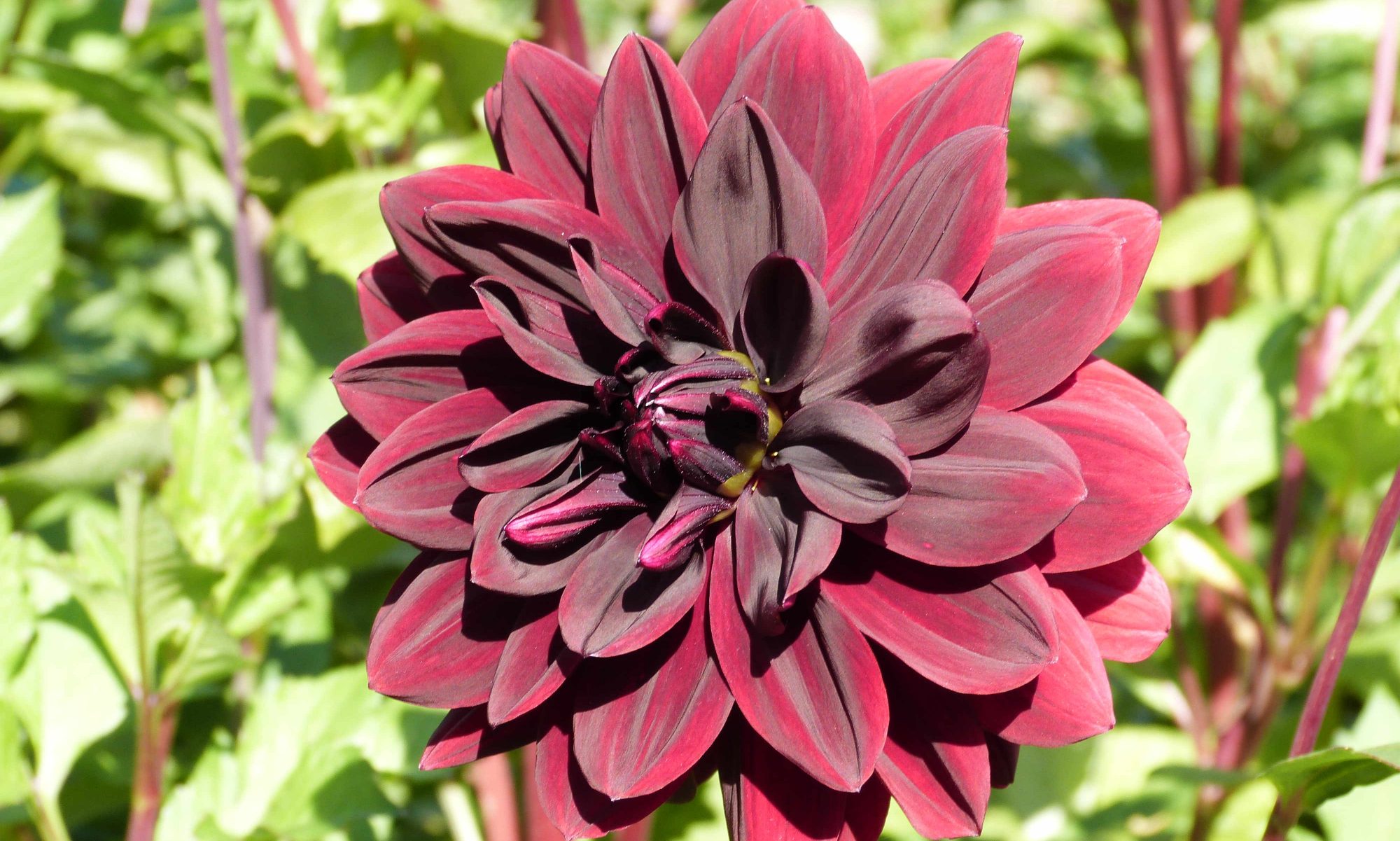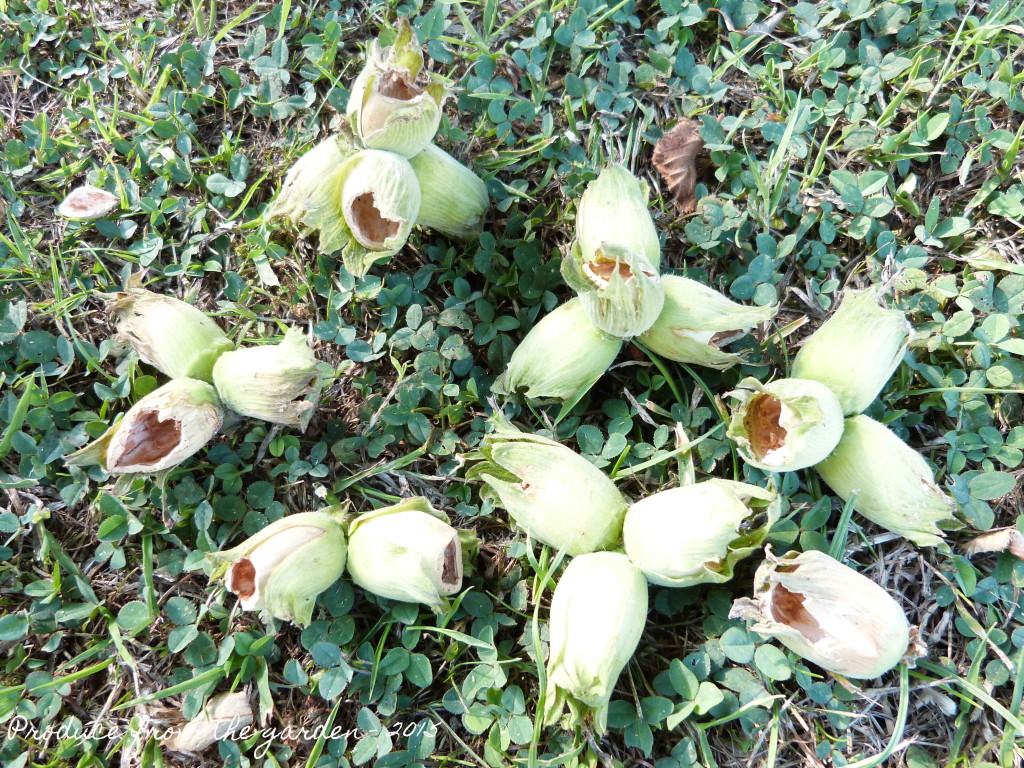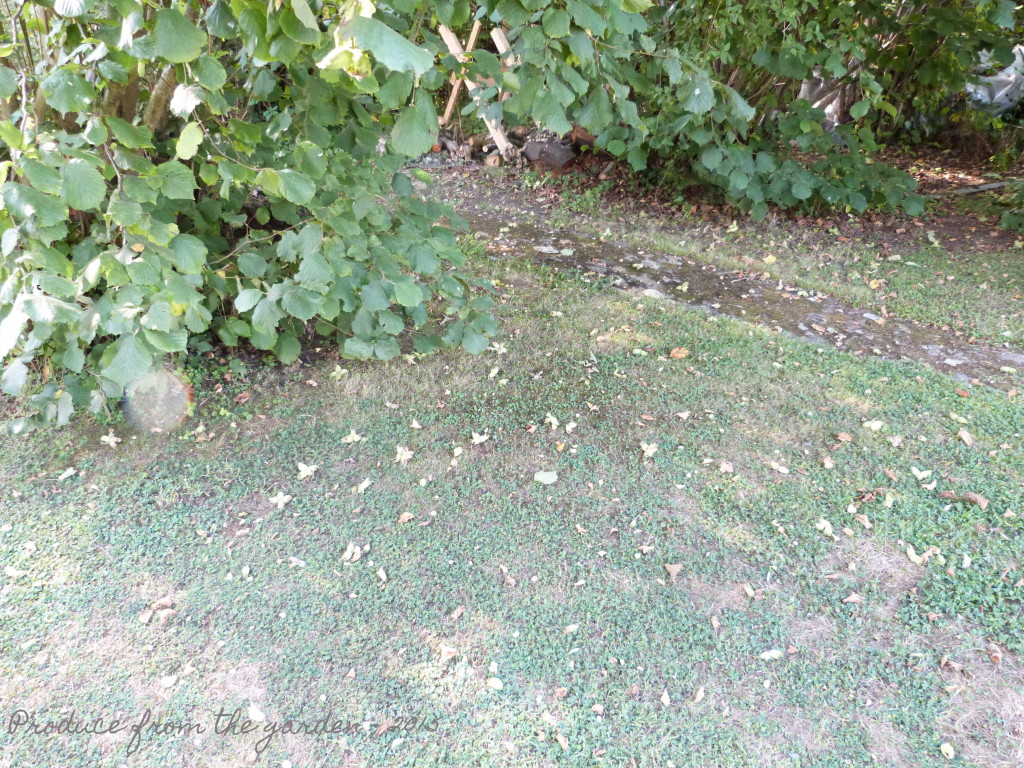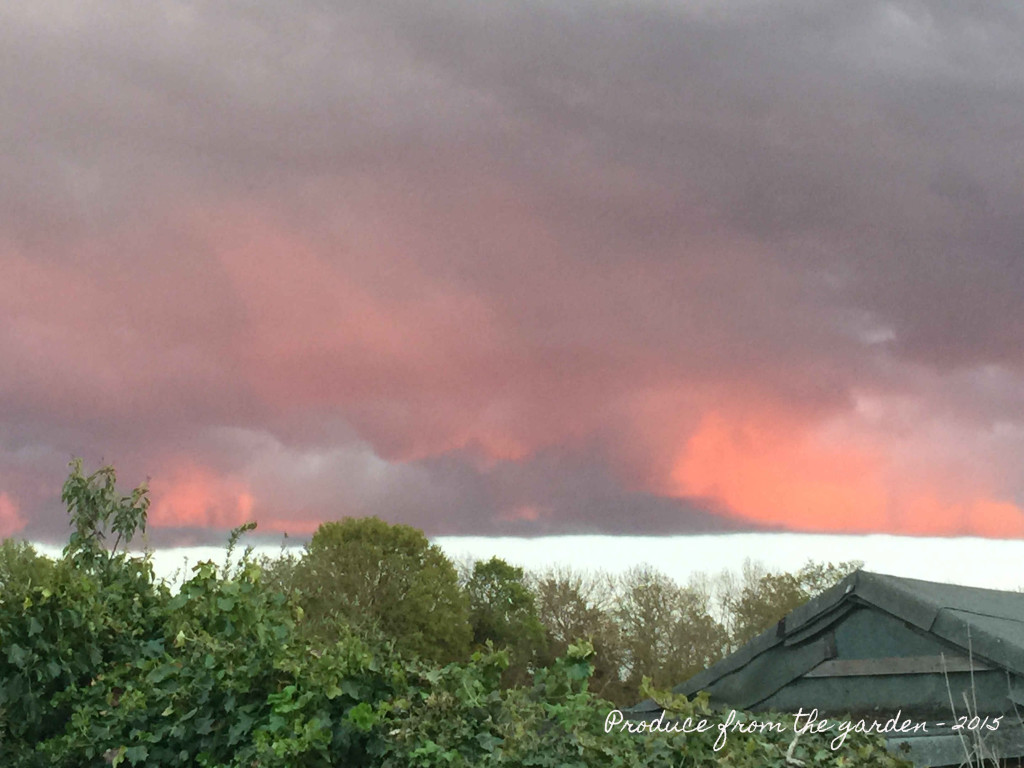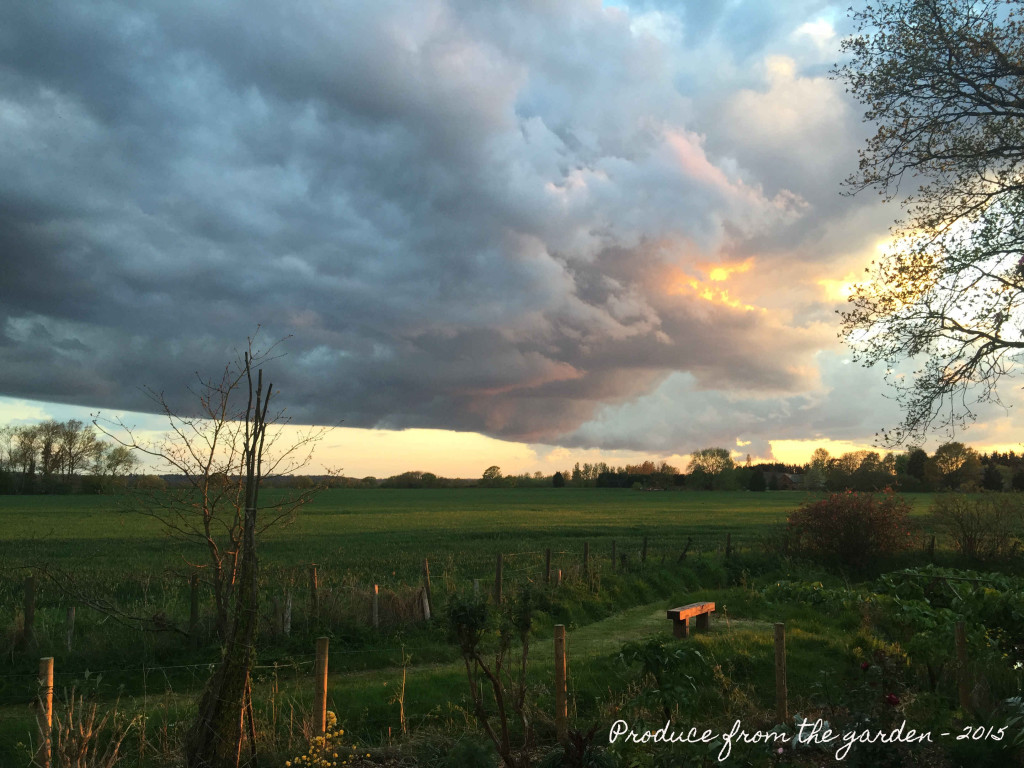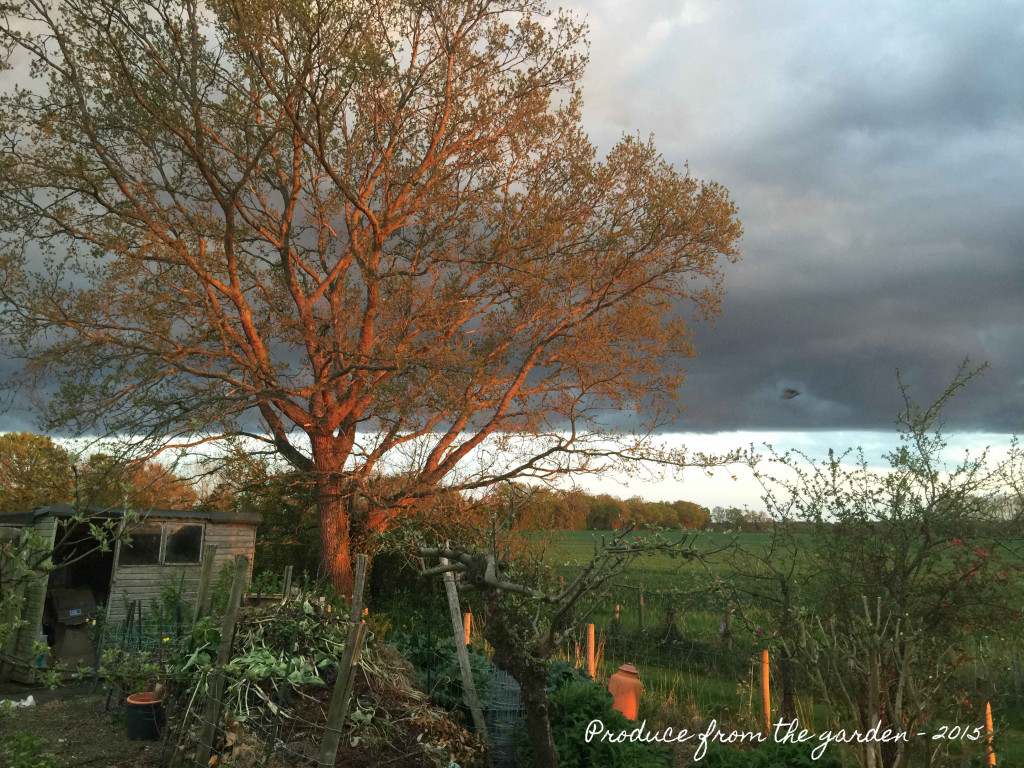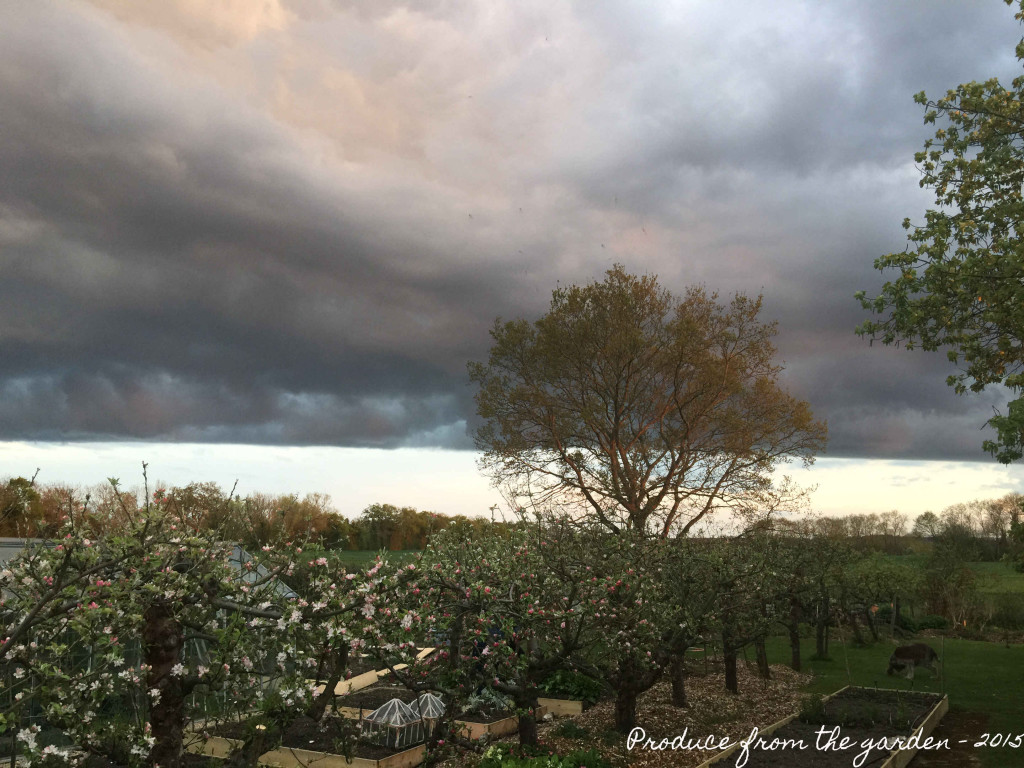Despite two large oak trees, more than a dozen apple trees, four plum trees and 8 ornamental trees in our garden, this fella seems to prefer our lawn for his pickings. I’ve been trying to catch this shy Lawn Pecker on camera for months!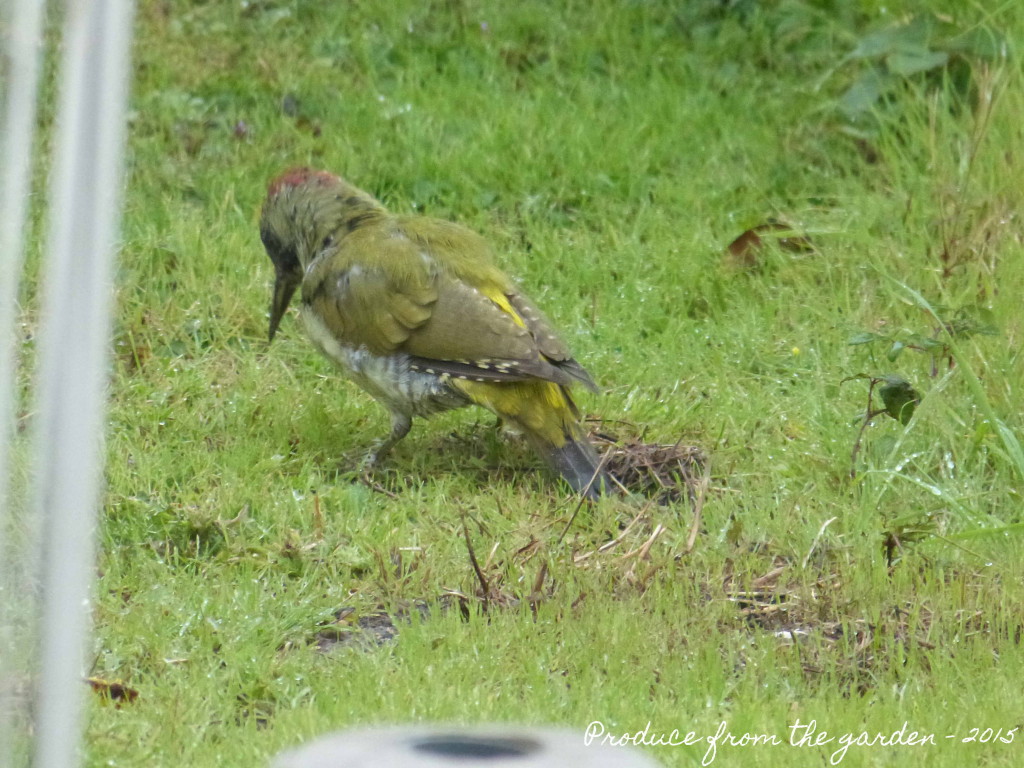
Wasps and squirrels
I don’t think the summer holidays are going to be very good for this blog! Our feet have barely touched the ground during this first week, friends, family and play dates squeezed in between trips to Lego Land, Somerset and Windsor. Fabulous fun, but the kitchen garden is in need of some attention. I have promised myself a few hours to weed the dahlia bed, and to take a few pictures for my end of July kitchen garden round up.
Although we’ve been busy, I have made a few discoveries. I noticed something inside one of my children’s scary bird boxes that they built and painted earlier in the year. My initial excitement that a brave family of birds had plucked up the courage to raise their young in my children’s creation was soon quashed, on closer inspection I saw the distinctive paper like wall of a wasp nest and then regular trips in and out by its occupants.
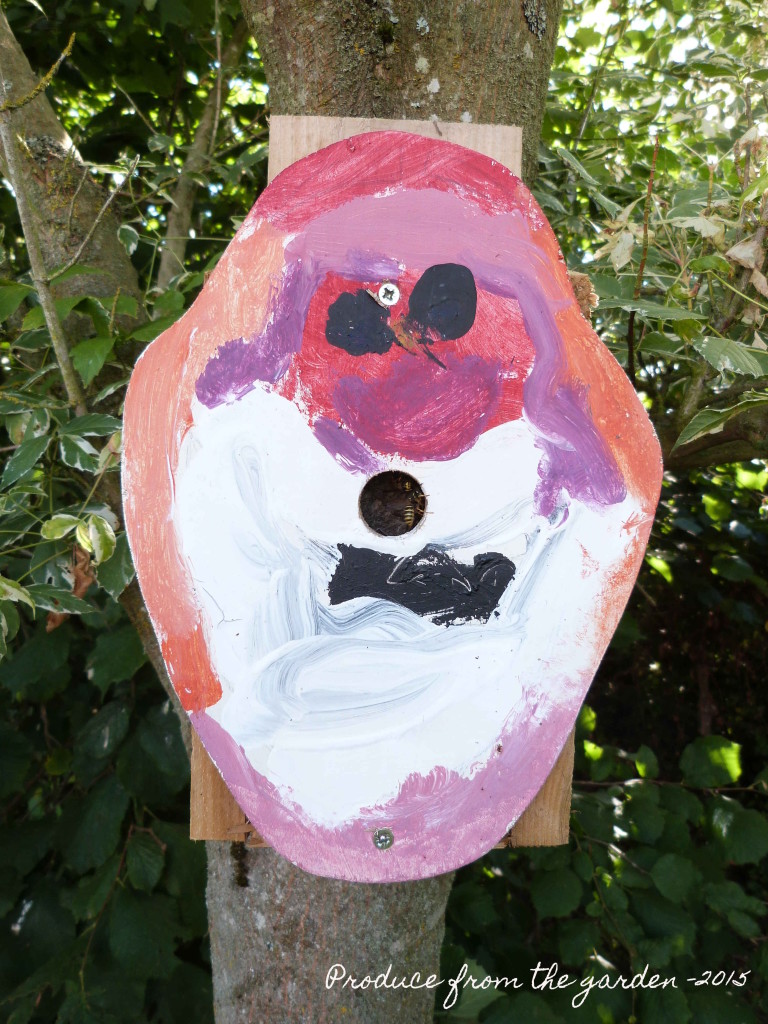 If you look carefully you can see a wasp and its nest through the bird box hole
If you look carefully you can see a wasp and its nest through the bird box hole
Last year we had lots of white tailed bumble bees which we co-existed with happily, we barely noticed wasps. This year there are few bees and wasps have taken over, resulting in uncomfortable wasp stings, an angry nest being removed from above our back door and another nest discovered in the front eves of our house. I am not looking forward to the plum and apple harvest, I can envisage it becoming a perilous race to gather the ripe fruit before the wasps devour it.
The husband strided into the kitchen last week and handed me a green immature cobnut from one of our trees, he popped it on the window sill telling me it would be a reminder to crop the ripe cobnuts before the squirrels get to them. This seemed a good plan, until I discovered squirrels have a taste for green unripe and soft nuts. The debris from their feast lies under all five of our cobnut trees; it’s looking as though the dream of eating our own cobnuts on Christmas day is sadly farfetched. The nuts are an added bonus, the main purpose for the trees is to coppice their lovely long branches, which we use to build structures and supports in the kitchen garden.
Nature to the rescue
At last nature has come to my rescue. Those of you who regularly follow the blog, will know the battles I’ve been having with blackfly, gooseberry sawfly and cabbage white caterpillars. Ladybird larvae have landed on my runner beans and are munching away at the blackfly, hurrah!
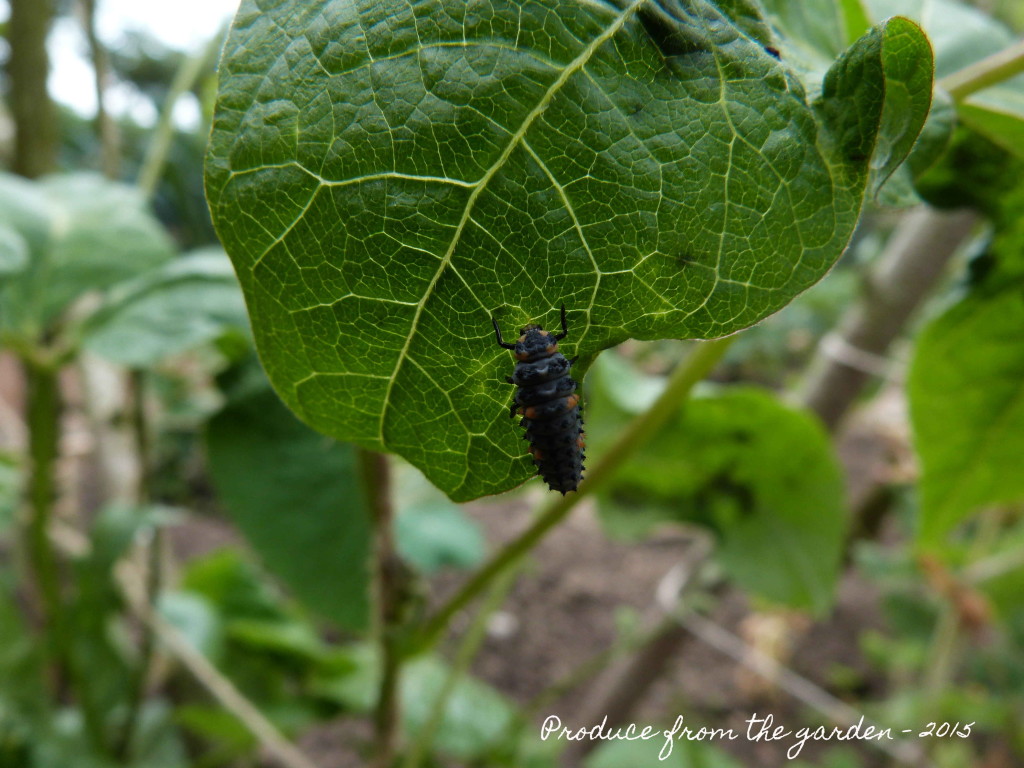 Ladybird Larvae (quite hard to photograph as they move quicker than I thought!)
Ladybird Larvae (quite hard to photograph as they move quicker than I thought!)
I wouldn’t call myself an organic gardener, but, I don’t use chemicals on food that I’m going to feed my family. I am a strong believer in the organic principle that if you look after your soil, it will in turn look after your plants. Nature also has it’s way of creating a fair balance. I fall down on the organic side as I use glyphosate to control perennial weeds such as bindweed.
Thank you Ladybird Larvae!
Amazing Skies
Yesterday evening we had amazing oppressive skies, made more intense by a thin distinct strip of clear cloudless evening sky on the horizon.
I’m digging, digging, digging at the moment, landscaping the area below the green house in preparation for my last three raised vegetable beds. A dedicated blog on this will be on its way soon.
